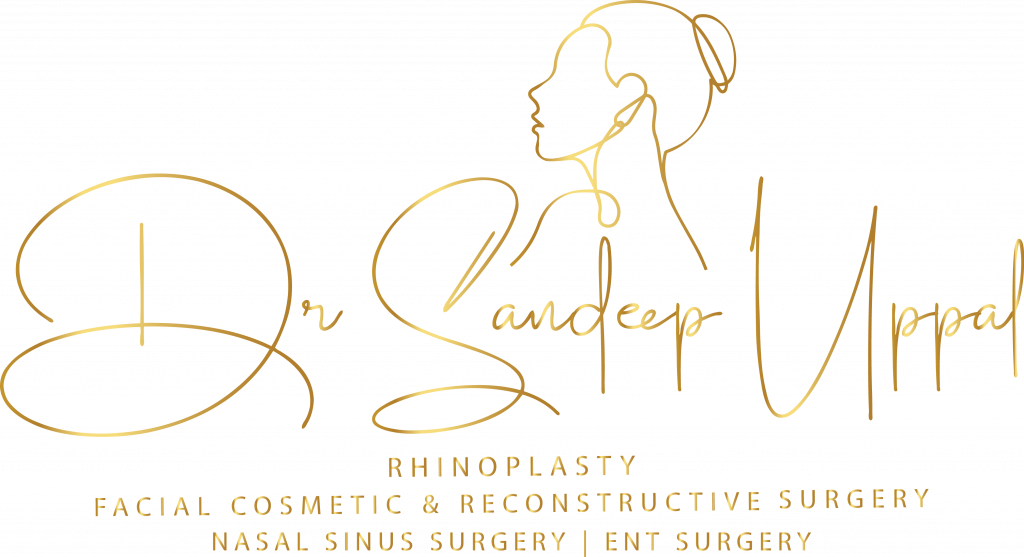MANAGEMENT OF SEPTAL PERFORATION
DIAGNOSTIC PROCEDURES
MEDICAL HISTORY
Dr Sandeep takes a detailed medical history to assess the overall health of the client and assess the cause of perforation. Client’s functional and aesthetic needs are assessed to aid in planning management.
PHYSICAL EXAMINATION
Initially, a functional and aesthetic nasal examination is done to assess the nose. This involves:
- Endoscopy: A nasal endoscopic examination is performed for a more detailed view of the septum and other internal nasal structures. This helps to identify any pathology that may be leading to the perforation.
- Chest X-rays, CT scan or MRI: These imaging tests may be necessary for a complete evaluation and to rule out other conditions like tumours and Wegener’s granulomatosis.
- Blood tests: These may be performed to rule out an inflammatory cause for the septal perforation.
- Biopsy: The nasal mucosa may be biopsied if a tumour, chronic infection, or chronic inflammatory disease.
- Allergy Testing: To rule out ongoing allergies that could complicate the healing process.
Read more about the causes and symptoms of Septal perforation here>>
(Place link to Nasal Septal Perforation webpage here.)
TREATMENT OPTIONS
CONSERVATIVE MANAGEMENT
SALINE SPRAYS
Helps to keep the area moist and free of crusts.
HUMIDIFIERS
To prevent the nasal passages from drying out.
CORTICOSTEROID CREAM
May help in reducing inflammation.
ANTIBIOTIC OINTMENTS
Can prevent secondary infections.
SEPTAL BUTTONS
These are less invasive and can be good short-term solution to reduce symptoms.
SURGICAL CLOSURE
Surgery for nasal septal perforation is usually considered a last-resort treatment when other conservative methods have failed to provide relief or when the perforation is large and causing significant symptoms. Here’s a more detailed overview:
LOCAL FLAP SURGERY
This is Dr Sandeep’s preferred method for closure of septal perforations. Dr Sandeep harvests tissue flaps made from mucosal tissue lining from inside the two nasal cavities to close the perforation. The flaps may be rotated or advanced to achieve the desired result.
INTERPOSITIONAL GRAFTING
A graft is placed between the two mucosal layers around the perforation. This provides an additional layer between the flaps and helps in closing the perforation and reduces the risk of reperforation significantly.
Commonly used grafts include bone or cartilage harvested from the back of the septum (if available) or cartilage from the ear or rib. Temporalis fascia harvested from the lining of the temporalis muscle, or AlloDerm or similar graft is another option.
SURGICAL PROCEDURE
- Anesthesia Assessment: The surgery is usually performed under general anaesthesia. Pre-anaesthesia check-up to assess fitness for anaesthesia.
- Incision: The procedure can be performed by making internal nasal incisions when the septal perforation is small. However, for most client’s Dr Sandeep prefers an external approach, which involves making a tiny incision in the party wall between the two nostrils along with some internal nasal incisions. This provides the greatest exposure during the surgery.
- Preparation: The margins of the perforation are usually freshened to facilitate better healing.
- Closure Technique: Local flaps and Interpositional grafting are used for closure of the perforation.
- Additional Measures: Sometimes, a temporary packing or a splint may be placed to support the repair.
- Monitoring: Initial recovery and monitoring in a post-anaesthesia care unit.
- Follow-Up Appointments: Regular follow-up appointments will be necessary to monitor healing, perform nasal toilet, assess the long-term success of the procedure, and manage any complications.
- Antibiotics: May be prescribed to prevent infection.
- Nasal Irrigation: Regular cleaning of the nasal passages with saline solution to promote healing.
- Avoidance of Nasal Irritants: Including smoke and harsh chemicals.
POTENTIAL RISKS AND COMPLICATIONS
- Failure to Close the Perforation: In some cases, the surgical procedure may not successfully close the perforation. Sometimes the graft or flap may not fully integrate, leaving a residual perforation. Often, despite closure of the perforation the symptoms may be minimized if the perforation becomes smaller in size.
- Recurrence: Even after successful surgery, there’s a possibility that a perforation could recur, necessitating additional procedures.
- Localized Infection: The surgical site itself may become infected, requiring antibiotic treatment.
- Systemic Infection: Although rare, infections can spread to other parts of the body, leading to more serious issues.
- Immediate Bleeding: Excessive bleeding can occur during or immediately after the surgery, requiring immediate intervention.
- Delayed Bleeding: Some clients may experience slow, ongoing bleeding, which may necessitate further treatment.
- Altered or lost sense of smell and taste.
- Anesthesia Risks
- Internal Scarring: Scar tissue may form around the surgical site, causing issues like blockage or narrowing of the nasal passages.
- External Scarring: There’s a risk of visible scarring if a trans columellar incision heals poorly.
- Septal Hematoma: Collection of blood within the septum can occur, requiring drainage.
- Septal Deformity: Altered structure can result from the surgery, affecting the shape and function of the nose.
PRECAUTIONS
- Avoid Nose Picking: This can exacerbate the condition.
- Limit Over the Counter Decongestant Nasal Sprays: Stick to a doctor’s prescription.
- Allergy Management: Properly treating allergic rhinitis can prevent further damage.
- Prompt Treatment: Address any symptoms or signs of infection quickly.
Before opting for surgery, it’s crucial to discuss all options, possible complications, and expected outcomes with Dr Sandeep.
Surgery is generally considered only when the benefits outweigh the potential risks and after all conservative options have been exhausted. The key to successful treatment often lies in a comprehensive preoperative assessment, a well-executed surgical procedure by an experienced surgeon, and diligent postoperative care. If you have a nasal septal perforation which is symptomatic, please consult Dr Sandeep for a proper diagnosis and treatment plan tailored to your condition.
RESTORE YOUR NASAL HARMONY: BOOK YOUR SEPTAL PERFORATION CONSULTATION TODAY!
Reclaim comfort in your breathing with a specialized Septal Perforation treatment. If you’re experiencing nasal whistling, crusting, or airflow disruption due to a septal perforation, a bespoke consultation with Dr Sandeep can guide you to a solution tailored to your needs. Journey with us towards restoring your nasal function and comfort. Our treatment options are designed to repair the perforation, enhancing both the structure and the function of your nasal passages.
Feel the difference a repaired septal perforation can make to your respiratory health, sleep quality, and overall life quality. Choose to take control of your nasal health today and schedule your consultation.
Click here to secure your Septal Perforation treatment consultation. Visit our appointment scheduling page and connect with us via WhatsApp here.


